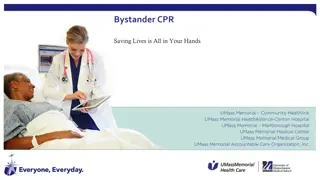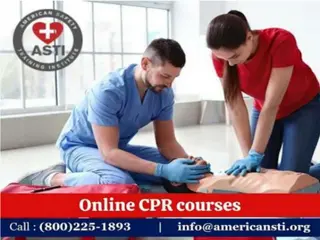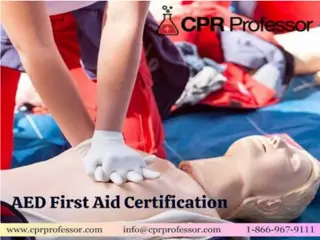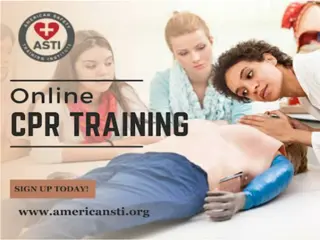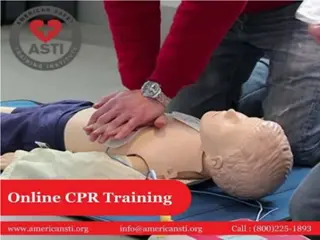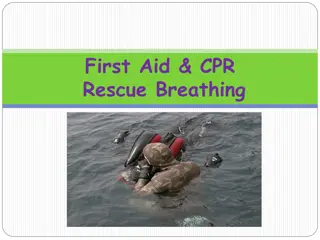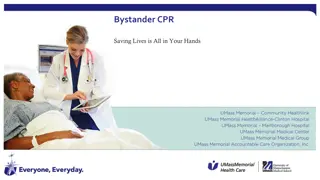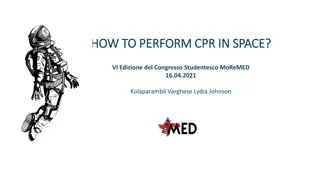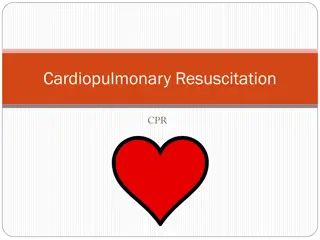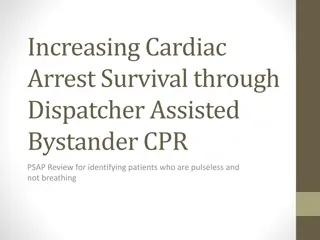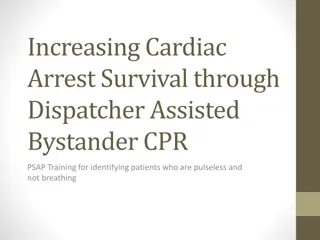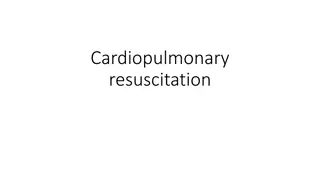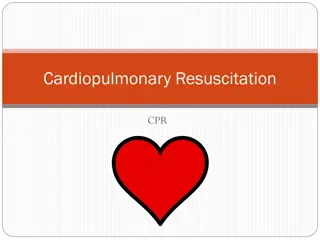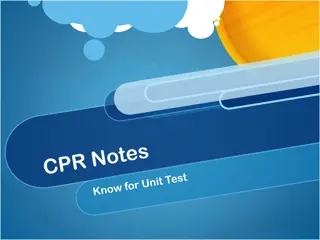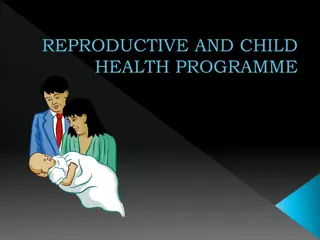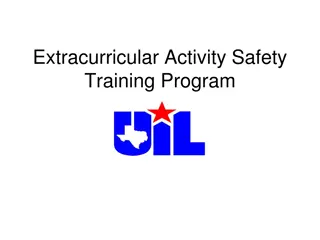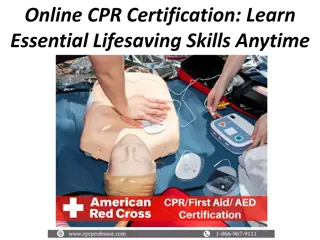Basics of CPR and Life Support Techniques
Learn about CPR (CardioPulmonary Resuscitation), its purpose, phases, and techniques like chest compressions and airway management. Understand the difference between Basic Life Support (BLS) and Advanced Life Support (ACLS) and their importance in saving lives during cardiac or respiratory arrests. Explore the critical steps of CAB (Compressions, Airway, Breathing) and the compression technique to ensure effective resuscitation.
Download Presentation

Please find below an Image/Link to download the presentation.
The content on the website is provided AS IS for your information and personal use only. It may not be sold, licensed, or shared on other websites without obtaining consent from the author.If you encounter any issues during the download, it is possible that the publisher has removed the file from their server.
You are allowed to download the files provided on this website for personal or commercial use, subject to the condition that they are used lawfully. All files are the property of their respective owners.
The content on the website is provided AS IS for your information and personal use only. It may not be sold, licensed, or shared on other websites without obtaining consent from the author.
E N D
Presentation Transcript
L5 Part 1 BCS. anesthesia and IC KarrarNader AL-Taie
CPR CardioPulmonary Resuscitation
Cardio pulmonary resuscitation (CPR) Cardio pulmonary resuscitation (CPR) is a technique of basic life support for the purpose of oxygenation to the heart, lungs and brain until and unless the appropriate medical treatment can come and restore the normal cardiopulmonary function PURPOSE 1-Restore cardiopulmonary functioning. 2-Prevent irreversible brain damage from anoxia INDICATION CPR 1- Cardiac arrest 2- Respiratory arrest 3-Combination of both
Definition of Cardiac arrest: It is loss of cardiac function, breathing and loss of consciousness. Causes of cardiac arrest 6H 6T
What is basic life support (BLS)? It is life support without the use of special equipment. What is Advanced Life Support (ACLS)? It is life support with the use of special equipment (eg. Airway, endotracheal tube, defibrillator).
BLS / Basic Life Support The three basic parts of CPR are easily remembered as "CAB": C for compressions, A for airway, and B for breathing. C is for compressions. Chest compressions can help the flow of blood to the heart, brain, and other organs -Early recognition 1-Check the victim response (are you Ok)? 2-no breathing or normal breathing (only gasping) 3- no pulse felt within 10 seconds -CPR sequence 1-C-chest compressions 2-A-airway 3-B-Breathing
Compression technique 1-petient most be placed on a hard surface 2-the palm of one hand is placed in the concavity of the lower half of the sternum . (2) fingers above the xiphoid process ( avoid xiphisternal juction fracture and injury) 3- sternum must be depressed at least 5 cm in adults And 2-4 cm in children and 1-2 cm in infant 3-preformed at a rate of 100-120/ min 4- compression to ventilation ratio -single rescuer = 30:2 -Tow rescuer = chest compression Must not be interrupted for ventilation - 2 minutes = 5 cycles 30:2 - Ensure : rate , depth , recoil
Airway Loss of tone in the muscles of the airway and falling back of the tongue procedure opening airway 1-Clear the airway 2- head tilt , chin lift 3-jaw thrust 4- finger sweep 5- Heimlich manoeuver
Breathing Rescue breathing can be: 1-mouth to mouth breathing 2-mouth to nose 3-mouth to mouth and nose
Assessment of restoration of breathing and circulation 1-Contraction of pupil 2- Improved color of the skin 3- Free movement of the chest wall 4-Swallowing attempts 5- Struggling movements
Signs of restored ventilation and circulation include: 1- Struggling movements 2-Improved color 3-Return of or strong pulse 4-Return of systemic blood pressure
When to terminate BLS 1-Pulse and respiration returns 2-Emergency medical help arrives 3-Physician declared patient is deceased 4-In a non health setting , another indication to stop BLS would be that the rescuer was exhausted and physically unable to continue to perform BLS


